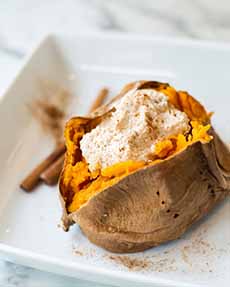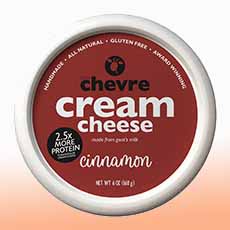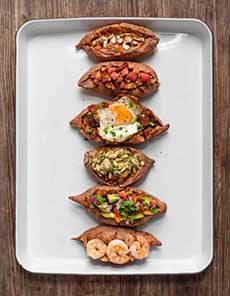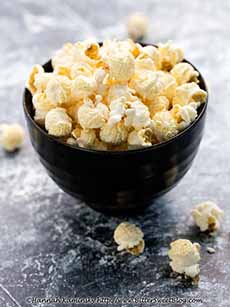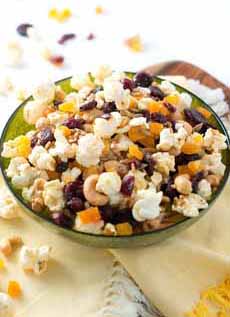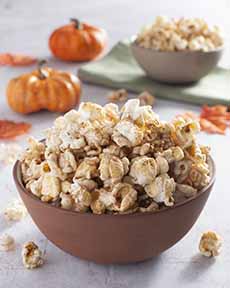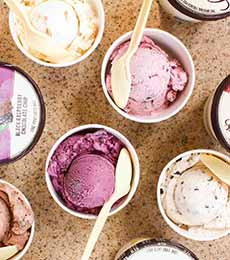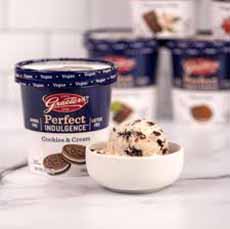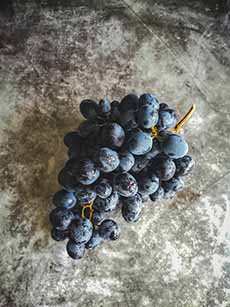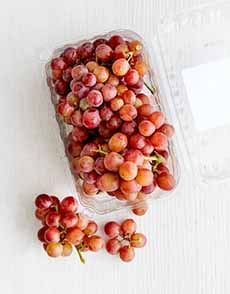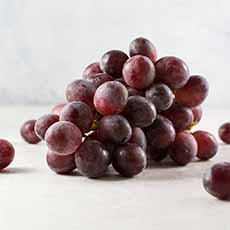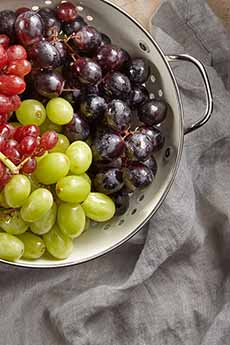|
It’s winter, where produce options are limited. But there’s still much to discover.
Take the chicory family. Can you name three chicories? (Check the photos at right.)
They are cool weather crops that come into season in late fall, and last through early spring.
Much more popular in Europe than in the U.S.*, the chicory family is a large one.
LOOK FOR THESE CHICORY VARIETIES
There are many varieties across the world. Each differs in appearance, color, and to some extent, flavor.
The heads can be loose-leafed or tightly-headed, tapered or round, smooth-leaved or frilled.
The colors range from the purest white and pale yellow, to bright green and maroon.
All share a slightly bitter taste.
The varieties best-known in the U.S. are:
Belgian endive (photo #1), also called French endive and witloof (white and red varieties)
Escarole (photo #2)
Frisée (a.k.a. curly endive—photo #3)
Puntarelle (a.k.a. cicoria di catalogna, cicoria asparago—photo #7)
Radicchio (radicchio treviso [photo #4], radicchio Castelfranco, chioggia radicchio, speckled and other varieties)
Check out a large photo of the different varieties, below.
HOW IS CHICORY RELATED TO LETTUCE?
Chicories are closely related to lettuces, but heartier, with a bitter edge.
Chicory (Cichorium intybus) is a genus of plants in the dandelion tribe within the sunflower family (Asteraceae).
Lettuce (Lactuca sativa) is an annual plant also in the daisy family, but branches off from chicory at the subfamily level.
Thus, while varieties of chicory may be referred to as lettuce,they aren’t.
WHY DON’T WE EAT MORE CHICORY
More than a few Americans don’t seem to like chicories, possibly due to their bitterness.
Perhaps in our country, where sugar is dumped into everything from bread to mustard and the government has looked at regulating the excessive amount of salt in prepared foods, people have been weaned away from the bitter flavor.
Bitter is one of the five tastes, along with salty, sour, sweet and umami.
Give it a chance. And check out the next section.
HOW TO TAME THE BITTERNESS OF CHICORIES
The easiest way to soften the bitterness in chicories is to shock them in an ice bath.
Simply plunge the vegetables into icy water (add ice cubes to cold tap water or refrigerated water) and leave them there for an hour or so. Then, give them a little nibble.
If they’re still too bitter for your taste, repeat; continue to do so until you’re happy with the result. Then, remove and spin the leaves dry (if you don’t have a salad spinner, air drying is fine). You will be shocked (pun intended) at the difference it makes.
If you’re serving the vegetable raw, remove the core from the head (the core is the most bitter part). With Belgian endive and radicchio, the easiest method is to cut the head in half lengthwise and then cut away the core.
HOW TO USE CHICORIES
Chicories shine in salads, and you can add or pair nuts, fruits or rich cheeses.
But their hardiness also lends themselves to braises, sautéed and roasted dishes, grilling, even turned into soup.
Two favorites:
Grilled radicchio is delicious, finished with nothing more than a drizzle of olive oil, a squirt of lemon, a few pinches of coarse salt and some freshly ground pepper.
Escarole sautéed with garlic in olive oil is a simple pleasure.
For salads, Belgian endive, frisée (curly endive) and radicchio are beautiful additions.
Some Recipes
Radicchio overview and recipes
Festive radicchio salad
Pear salad with blue cheese
Spinach, citrus and radicchio salad Pear salad with blue cheese and radicchio
Grilled bitter greens with caraway peach dressing
Belgian endive salad with roquefort, figs and walnut oil
FOOD TRIVIA
FOOD TRIVIA #1: The roots of most chicory plant varieties have long been used as a coffee substitute. It’s naturally caffeine free.
In the 19th century it was used as a coffee additive to stretch limited supplies of coffee; substitute became widespread in France and in some of the French colonies, like New Orleans.
The roots are roasted, ground, and combined with coffee to create the chicory coffee enjoyed in Creole cuisine.
During the Civil War, when coffee was unattainable in the South, chicory became the substitute drink. (We’ve had it in New Orleans; it’s a nutritious drink but an acquired taste.)
FOOD TRIVIA #2: What Americans call endive, the British call chicory; and what the Americans call chicory, the British call endive [source].
|
|

[1] Belgian endive, also called French endive and witloof (photo © Max Straeten | Morguefile).

[2] Escarole, one of the most widely-available chicories (photo © Specialty Produce).

[3] Frisee, delicious in a salad with lardons, bacon and sliced pears (photo © Wise Geek).

[4] Radicchio treviso, a fancy variety of the round red head (photo © Good Eggs).
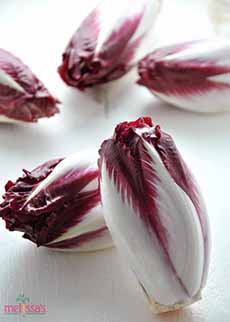
[5] You may mistake this for radicchio, but it’s red Belgian endive. Compare it to photo #1 (photo © Melissa’s Produce).

[6] This hard-to-find beauty is castelfranco chicory (photo © Good Eggs).
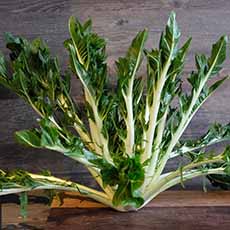
[7] Puntarelle is perhaps the most difficult chicory variety to find in the U.S. Some call it the “asparagus” of chicory varieties (photo © Jerome Prohaska | Wikipedia).
|
